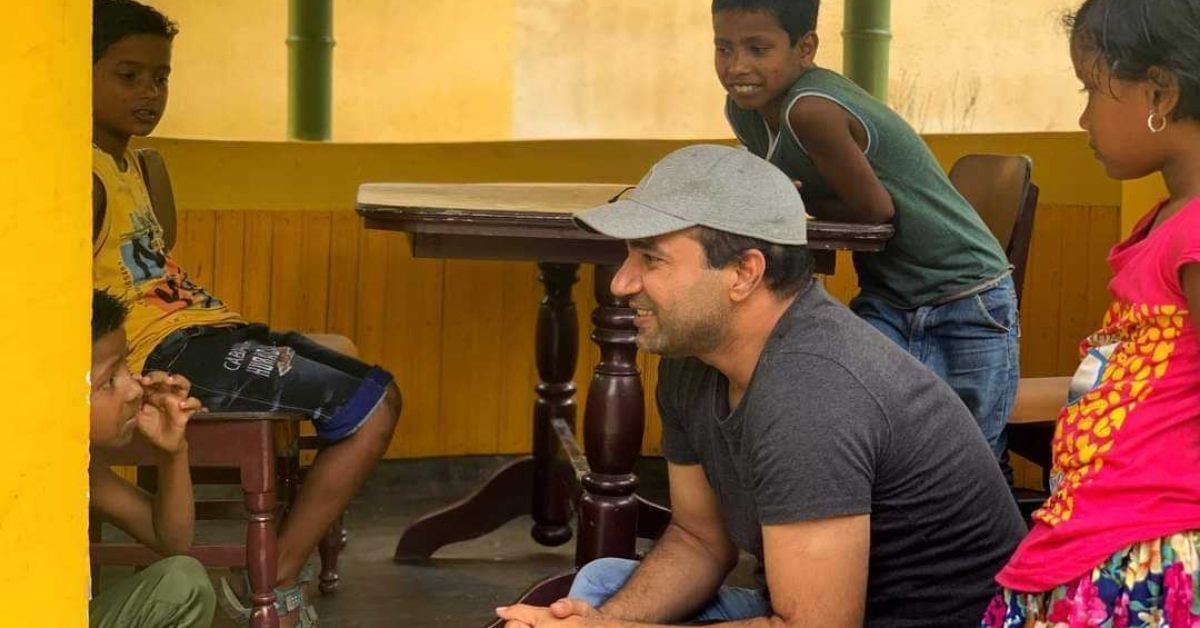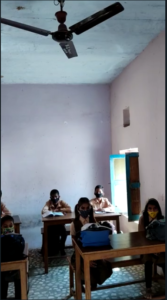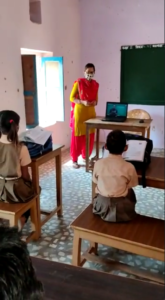IAS Officer’s ‘Electrifying’ Idea Brings Happiness to 900+ Govt Schools
In the span of one year, Dr Jitendra Kumar Soni, District Collector in Nagaur, Rajasthan, ensured that 3,068 schools had a working electricity connection.

“Change doesn’t happen by simply giving orders. It happens when common people join hands and work together to break the status quo,” says Dr Jitendra Kumar Soni, who has steered local villagers, village councils and school staffers to light up the lives of thousands of students.
Since Dr Soni took over as District Collector in July 2020, over 900 schools of Nagaur district, Rajasthan, have been fully electrified. This feat has been achieved wholly through community efforts exercised under campaign Ujaas initiated by this civil servant.
“A meeting with all District Education Officers in the first days of my posting revealed that a lot of schools did not have power connections. This had to be changed on a priority basis. So the process was set in motion immediately,” he tells The Better India. A meticulous survey was hence processed which identified exactly 979 rural schools in Nagaur running without electricity.
In the sweltering heat of this desert state, this posed a serious problem as students would have to work hard without any fans or lights to provide relief from the weather.

With speedy action, he ordered the submission of demand orders from each of the schools and compiled teams consisting of electricity board members as well as education officials.
While the dutiful initiative had begun, the contribution of commoners seemed integral in furthering the cause. “To get the community together, it was important to make them believe that the initiative was sincere and its intention was honest,” he adds.
While the ideal might sound straight out of the movies, pointed efforts made it real. Each school board would meet up with the Electricity Board on a weekly basis to discuss logistics of fund collection, public awareness and electricity set up. This way on-ground realities were brought to the fore and the voice of the people at the local level was heard.
“The Panchayat Samiti of each village would go door-to-door talking, spreading awareness about the initiative and identifying locals who were willing to contribute,” Block Development Officer (BDO) Charan Singh of Nagaur, shares. This collection was rigorously conducted by the block officers, school teachers and heads of institutions. Remotely located schools often required relatively more funds for extensive set up. “Soon, though, donations to electrify all 15 schools in our block were submitted by the people themselves in the form of demand drafts,” Singh adds.
This team work was conducted under the uniting guidance of the DC himself, who kept track of all developments. Updates of all meetings were cross checked by him to ensure that the electrification was being carried out on a priority basis.
Chief District Education Officer Sampat Ram shares that an approximate sum of Rs 80 lakh was raised within six months, between October 2020 and March 2021, by commoners of the state as funding for the project. “All of this money came from parents of students, heads of village councils, Bhamasars (philanthropists) and local MLAs. All thanks to our District Collector, this large scale of mobilisation was made possible.” he says.
Today, all of the 3,068 schools in Nagaur have a working electricity connection. This makes it the first district in the state to set up power supply in all its rural schools.
The process has not been easy, but systematic implementation and generous cooperation has transformed the experience of education for students over the course of the pandemic.
Coming of Light in Nagaur
Situated in the interiors of the district at the Nagaur-Bikaner border is Kharia State Primary School. Its headmaster, Rajendra Kumar Tanwar, says, “This institution has been standing since 1962 but it’s only now that the basic amenity of electricity has been made possible through local efforts.” The electrification of his school alone took close to Rs 15,000 including costs of equipment, labour, and other bills. “Every villager was able to contribute an amount of Rs 150 to Rs 200. Whatever amount was left to fill the pool was covered by the Sarva Shiksha Abhiyan (SSA) fund allocated by the government.” he adds.
While some schools had electricity poles nearby that needed to be wired, many lacked even that.
Under this campaign, a metered electricity connection was introduced in the villages.

Shyam Sharma, a teacher at GPS Meghwalo Ki Dhani Bukaram Sota shares, “The monthly electricity bill will be generated by the meter. This will be taken care of by the school funds or donations of villagers. We just hope we are able to cope with the costs.”
Similar bittersweet emotions are apparent in what Dilip Kumar of Government Upper Primary School, Kantiya village, says: “The initial costs of issuing multiple demand notices to various departments was waived off by the government. It’s a major relief that all we had to pay was the base fare for registration and set up. That too required joint contributions from the entire community along with willing philanthropists.”
Dearth of resources was obvious, but the scale of the problem motivated the district authorities to tackle it area wise. When a systematic approach revealed the amount of funds that would be required to see the campaign through, Dr Soni personally contracted local philanthropists to donate towards the cause of development of children’s education. “Once the funding pool for a particular village was complete, a demand notice was immediately issued and the electricity board was called to complete the electrification. This took an approximate period of one month on an average,” shares Sampat Ram.
The pandemic-induced lockdown was also used as an opportunity to set up fans, lights, and electric wires throughout campuses without hindrance.
With the basic amenity of electricity comes not only decent comfort, but also the possibility of higher education standards through the use of computers and smart boards.

While the students are studying remotely as of now, all authorities and parents are relieved to know that improved conditions would be awaiting their imminent return.
What has made this impact-driven change possible is understanding and empathy towards on-ground realities of the backward population on a leadership level.
“I myself completed my education from a government school. There are over 3,000 such schools in Nagaur district alone. I can understand how each student of those schools must feel when their campuses become a progressive, developed place of learning,” he shares.
Edited by Yoshita Rao
If you found our stories insightful, informative, or even just enjoyable, we invite you to consider making a voluntary payment to support the work we do at The Better India. Your contribution helps us continue producing quality content that educates, inspires, and drives positive change.
Choose one of the payment options below for your contribution-
By paying for the stories you value, you directly contribute to sustaining our efforts focused on making a difference in the world. Together, let’s ensure that impactful stories continue to be told and shared, enriching lives and communities alike.
Thank you for your support. Here are some frequently asked questions you might find helpful to know why you are contributing?


This story made me
- 97
- 121
- 89
- 167











